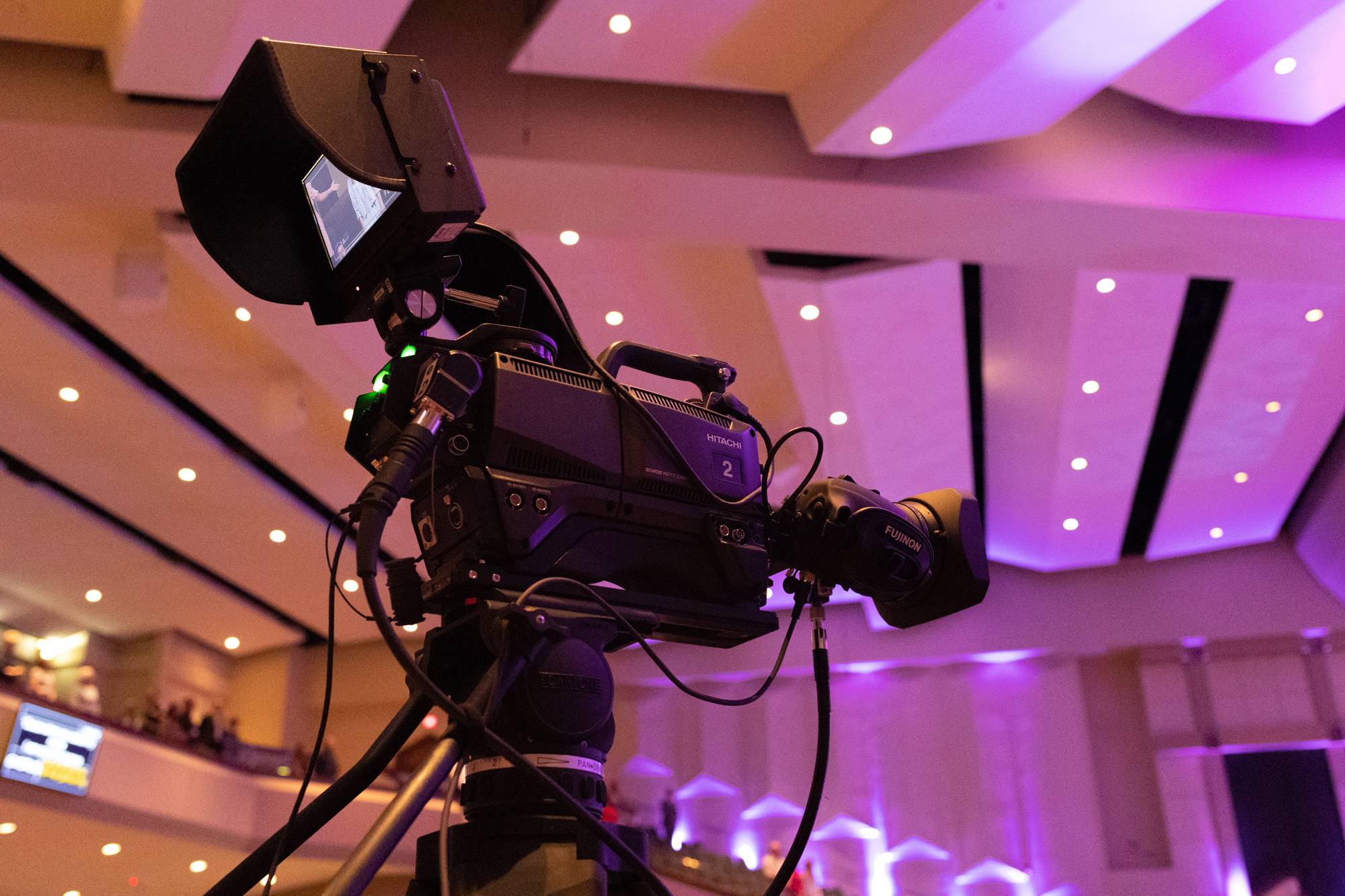 Most of us have seen slowly-moving dark bands or thin lines when shooting video with large LED displays in the frame. The LED screen could be the focus of the shot or just in the background, but either way, these unwanted artifacts detract from the visual experience and vary in size, number, intensity, and movement depending on multiple factors.
Most of us have seen slowly-moving dark bands or thin lines when shooting video with large LED displays in the frame. The LED screen could be the focus of the shot or just in the background, but either way, these unwanted artifacts detract from the visual experience and vary in size, number, intensity, and movement depending on multiple factors.
Most of these artifacts are caused by the type of imagers used in the cameras. Modern video and still cameras use CMOS sensors to capture images, and most have been “rolling shutter” CMOS imagers. In this article, we will discuss the advantages of the latest development in CMOS sensors – “global shutter” – and how global shutter imagers can greatly reduce or eliminate LED display artifacts.
The Evolution of the Solid State Imager
The original solid state imager was the Charge Coupled Device (CCD), which was developed back in the early 1970s. CMOS sensors are digital devices and were developed in the late 1990s.
Today, all solid state imagers use electronic shutters to control their exposure time. The primary differences between CCD and CMOS imagers is that CCDs are analog rather than digital, and were (effectively) global shutter devices. All CMOS imagers were rolling shutter devices until recently. Rolling shutter CMOS sensors provide good performance with low noise, and they also cost less to manufacture, which helps keep camera costs down.
Manufacturing costs for CMOS global shutter imagers are higher, as there’s a lot more circuitry at each pixel to store and process the readout of the image. Most global shutter HD production or broadcast cameras are also full progressive scan (1080p60). But if you’re shooting in an LED environment, the benefits of global shutter are generally worth the extra cost.
Why are Global Shutter Cameras Needed Now?
The use of LED displays and LED lighting can create temporal artifacts, which are commonly perceived as flickering. This is particularly the case with the increasing use of lower-cost LED displays, screen processors and lighting. LEDs are controlled by image refresh frequency, along with Pulse Width Modulation (PWM) frequency for brightness. The relative frequencies of the LED screen refresh rate and PWM compared to the camera’s shutter frequency can cause visible artifacts such as flicker, rolling dark bands or thin lines. They can also cause “skew” – image curving or bending that is caused by fast-moving objects or fast camera movement during the acquisition time of rolling shutter imagers.
The human visual system has a powerful and unique capability called “persistence of vision,” which allows all these sorts of artifacts to appear normal to our eyes when seen directly. However, rolling shutter cameras acquire images in a way that causes them to “see” these LED flicker artifacts during acquisition.
Rolling Shutter Image Acquisition
Rolling shutter imagers acquire the pixels in each line of the video frame sequentially. This usually occurs over the frame rate of 59.94 Hz. During this time, the LED display refresh frequency and PWM are varying the brightness of the image as shown by the green pulses in the diagram below. Some lines are displaced in time and will have different brightness from other lines. The image’s line readout takes place at the end of each line. When of all the sequentially acquired lines are delivered as a single video frame to the TV or monitor display, this shows as bands of varying brightness. This “banding” may occur when shooting with LED video displays, LED lighting, or both.
Global Shutter – Image Acquisition
In this context, the term “global” means “all-inclusive,” and refers to the fact that global shutter CMOS imagers acquire the entire video frame in one instant. The entire frame is stored in the imager’s memory buffer for sequential readout, and the individual line readouts then proceed over the frame time, usually 59.94 Hz. Any difference in timing between the imager’s shutter speed and the LED refresh rate (green pulses) is compensated by adjusting the camera’s shutter to be an even multiple of the LED’s refresh rate. This eliminates moving horizontal banding or lines in the picture.
To help you further visualize the difference between rolling shutter and global shutter imaging, please see the animated video at www.hitachikokusai.com/ShutterAnimation.
Moiré
Moiré artifacts are generally independent of the imager’s shutter type and occur with both video and still cameras. When shooting any pixel-based display or LED video wall, moiré is when odd stripes and patterns appear in your images. It occurs when a finely detailed pattern on your subject meshes and conflicts with the pixel pattern of the imaging sensor in the camera, causing viewers to see a third, separate pattern.
There are several ways to control moiré. The easiest may be to simply reframe the shot by slightly zooming in or out to change the relative patterns. You can also reduce the image sharpness of the captured LED display by repositioning the screen further in background. Opening the iris has a similar effect by reducing the depth of field, putting the LED screen slightly out of focus behind the subject. You can even use a diffusion filter in front of the lens to slightly reduce camera resolution.
LED Screens and Video Display Processors
When selecting LED displays, screen processors and cameras, be sure to thoroughly test the selected LED display and screen processor with the camera exactly as you plan to use them, before you purchase anything.
Inexpensive LED displays are like most everything else: you get what you pay for. High quality LED screens offer better DC stability, better matching of the individual LEDs, and the capability of higher refresh and PWM frequencies. Higher frequencies reduce flicker.
Like the LED screens themselves, using a high-quality LED video processor with genlock and adjustable refresh rate can completely eliminate flicker, banding and other artifacts when using a global shutter CMOS camera. This is accomplished by adjusting both the LED screen refresh rate and the camera imager shutter speed so that they are genlocked at even multiples of each other.
CMOS Global Shutter Cameras from Hitachi Kokusai
Hitachi Kokusai offers two global shutter cameras with full HD progressive scan (1080p60) that deliver these benefits while maintaining the company’s hallmark cost-effectiveness and price/performance value: the Z-HD5500 and the new SK-HD1800. Both have selectable HDR profiles, while the SK-HD1800 also has a remote motorized filter wheel. All Hitachi progressive-scan HD cameras can be connected to the highly flexible CU-HD1300 camera control unit (CCU) series via SMPTE fiber and/or Triax. Select CU-HD1300 models can output upconverted 4K/UHD pictures from the connected HD camera plus simultaneous HDR and SDR with separate adjustments. SMPTE ST 2110 Media over IP output is also available.




